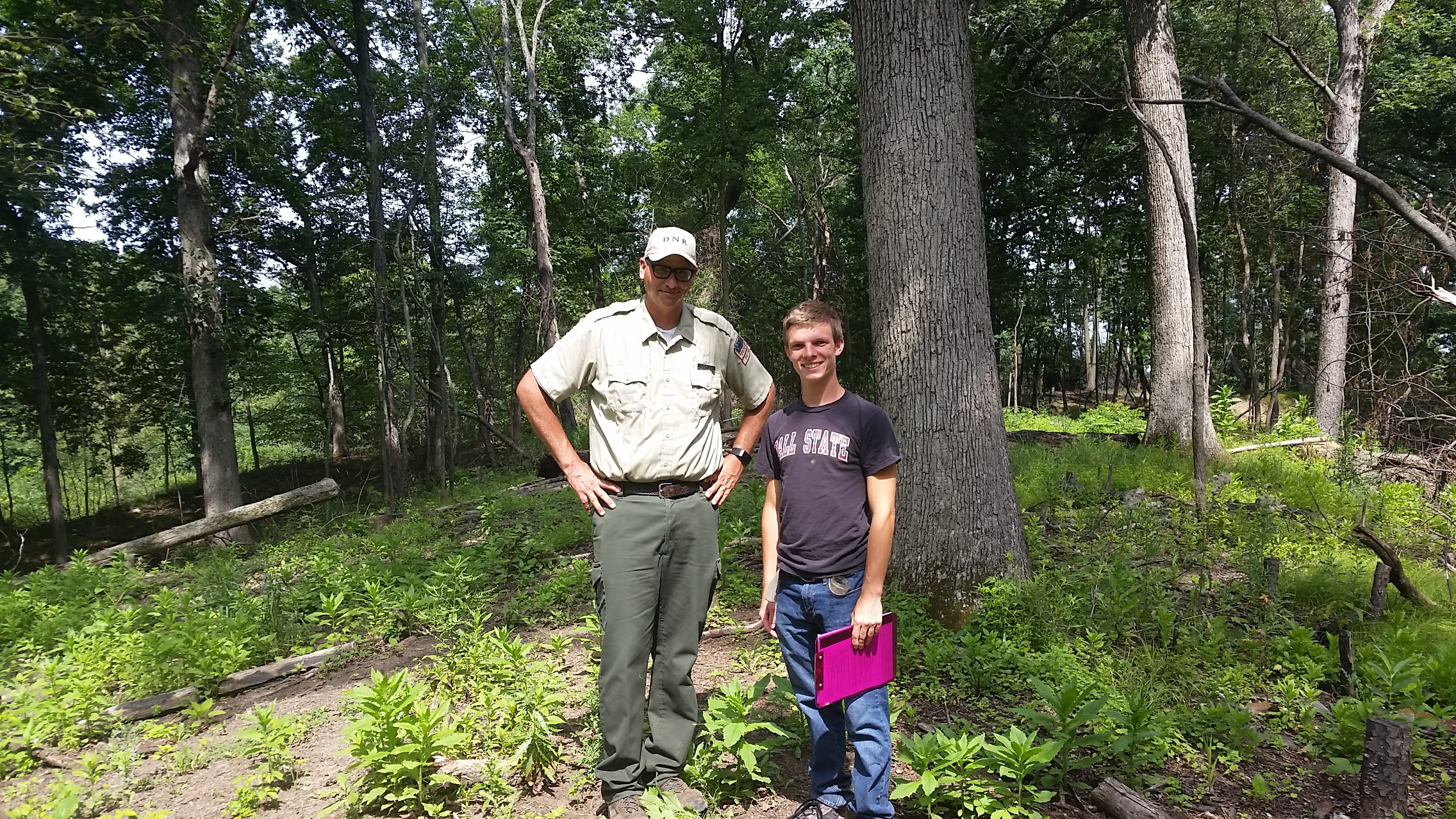What's happening at the Clear Lake Nature Preserve & Brennan Woods?
November 22, 2022
Project Update - November 2022:
We will be burning a brush pile at Clear Lake Nature Preserve on Tues., Nov 22 and Wed. Nov 23 to prepare the are for frost seeding by Blue Heron Ministries this upcoming December.
Project Update - November 2022:
The burn at CLNP went as expected! The wetland areas will be seeded early this winter.

Project Update - November 2022:
If weather permits, Blue Heron will do a prescribed burn at the wetlands in CLNP on Wed., Nov 2., to prepare the site for the frost seeding to be done by Dec. 30th, 2022.
The trail through CLNP will be conceptualized then monitored throughout the 2023 Spring season to determine how wet the ground will be in the low area. With this knowledge, we can plan (or not) for any wet crossings.
Project Update - August 2022:
Restoration work continues on the west end of Clear Lake Nature Preserve. We are working with our partners at the U.S. Fish & Wildlife Service, Indiana Department of Natural Resources, and Blue Heron to improve the wetland on the west end of Clear Lake Nature Preserve.
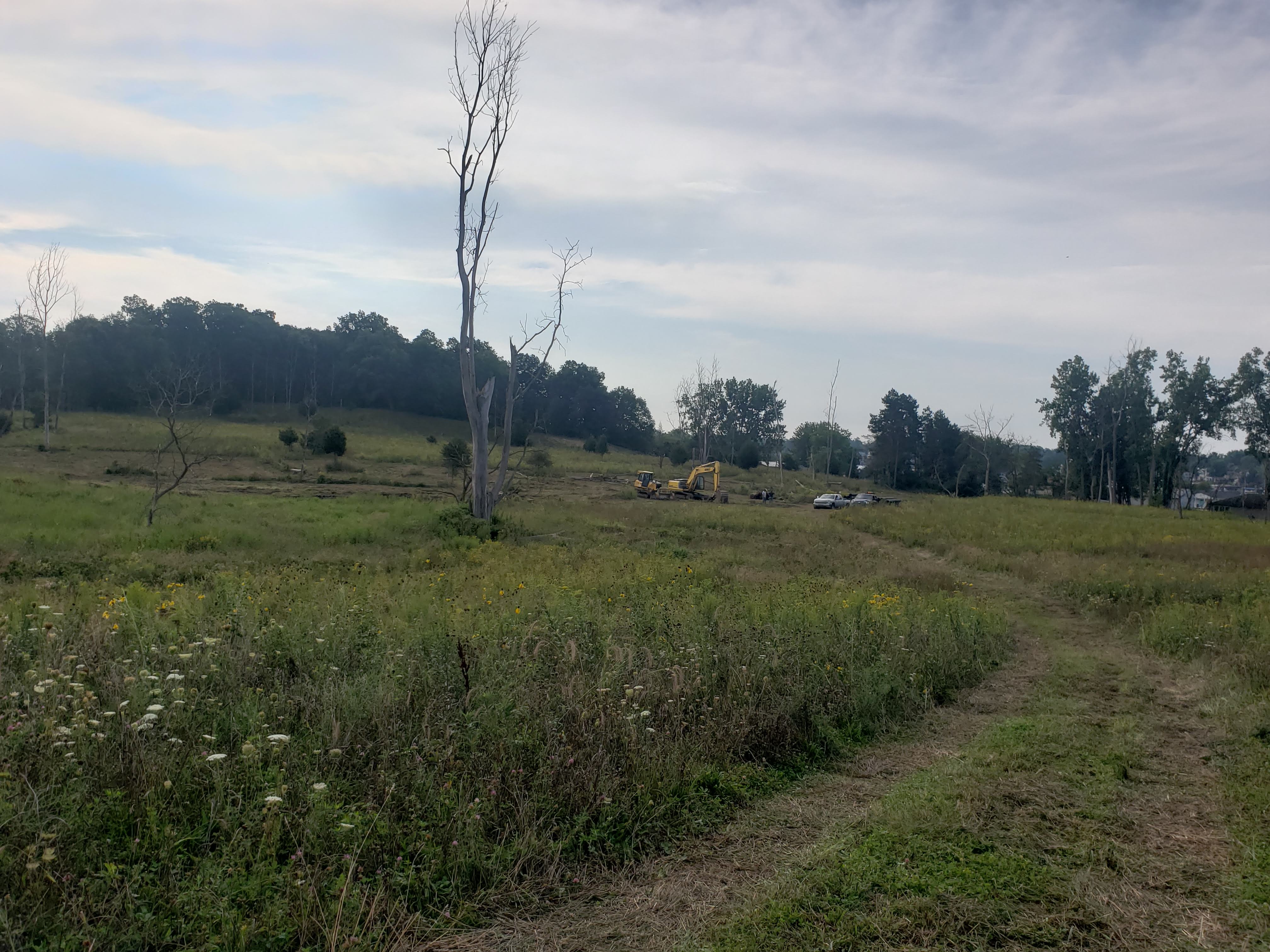
A drop pipe structure is being installed at the mouth of the wetland along CR 675. The failing tile, running north/south through the low point in the former field, will be replaced and connected to the drainage structure. The goal is to help us store stormwater holding capacity to prevent flooding on CR 675.
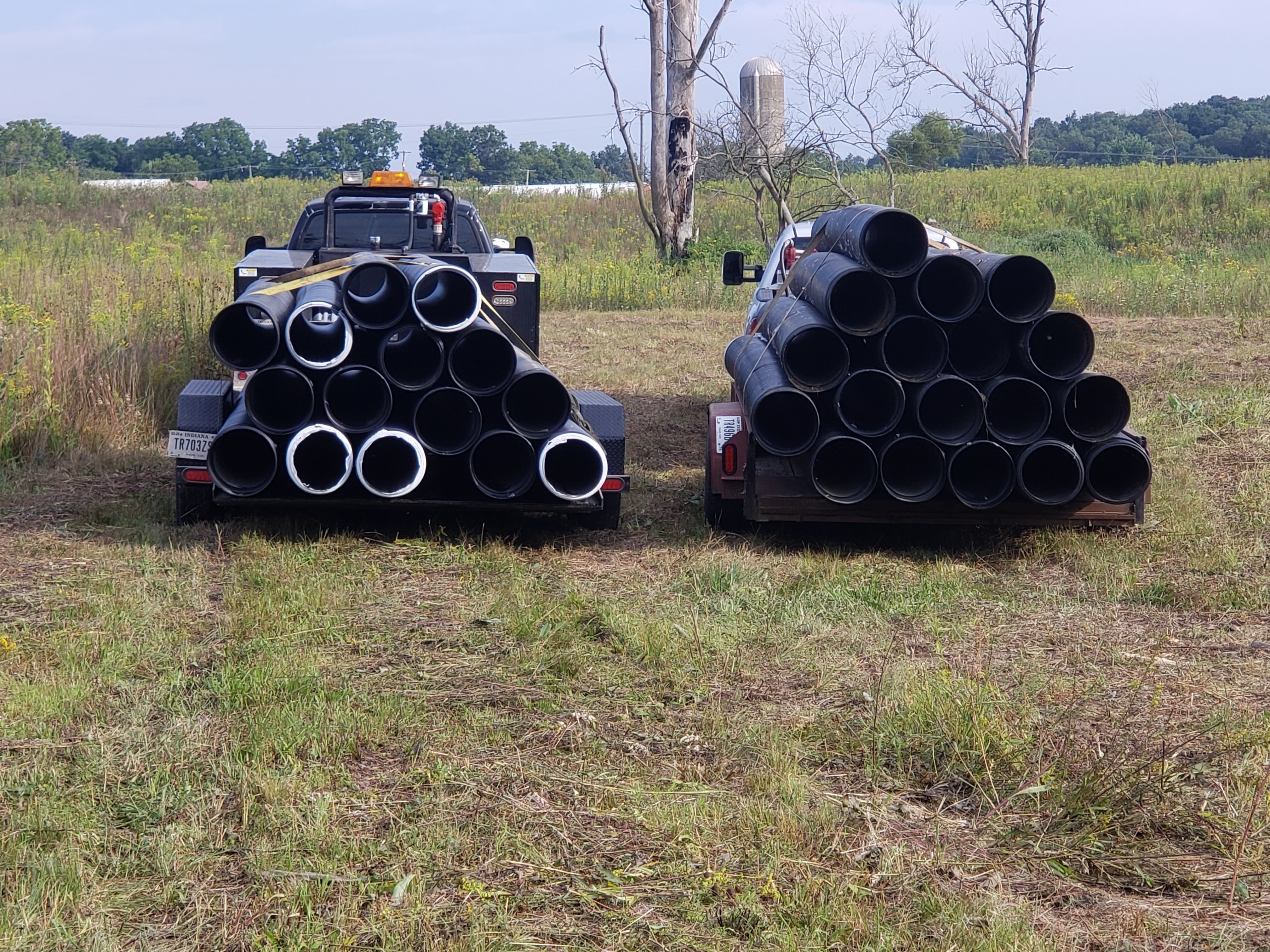
Once these steps are complete, we will extend our hiking trail through the restored prairie, bringing us to just under 2 miles of trail on this 46-acre preserve. The figure-eight configuration will cover five different ecosystems and allow hikers to trek through the woods, through the prairie or both.
Project Update - October 2019:
Our work continues to restore the west end of the Clear Lake Nature Preserve from a fallow field to a native prairie ecosystem. The activities outlined below will be completed over the next several weeks, if the weather cooperates.
Week of October 7th: using ATVs, spray the open field to kill the Chinese bushclover (non-native and invasive) patches and the cover crop, an annual grass planted to grow and cover the open field this spring and summer.
Week of October 14th: drill or use equipment to place and bury seed of new cover crops including annual rye and Canada rye on slopes and near the southern boundary.
Week of October 21st: burn dead cover crop planted this spring. Immediately plant annual rye and Canada rye on remaining slopes in an effort to establish ground cover before winter. The Canada rye will over winter if we do not have a severe winter and will provide ground cover as the prairie is established.
In December: sow (broadcast) prairie mix seed over the entire west end of the Clear Lake Nature Preserve.
These activities support the restoration of an important ecosystem that has rapidly declined in the Midwest. Prairies offer habitat and food to a variety of animals, prevent erosion and allow for water infiltration.
Project Update - September 2019:
We are excited to make two announcements! First, we will be working with a group of engineering students from Trine University to design the last remaining section of the Brennan Woods trail - a bridge or boardwalk to traverse the large wooded wetland. Stay tuned for updates!
Second, we have installed the educational signs along the trail! Thanks to NIPSCO for the grant support and the Fremont 8th grade class for the design and research support. Take a hike and check 'em out!

Project Update - August 2019:
Many thanks to the Northeast Indiana Solid Waste Management District (NISWMD), who partnered with us to remove the gigantic piles of brush at the Clear Lake Nature Preserve’s soon-to-be-restored prairie.
Click here for the full story.
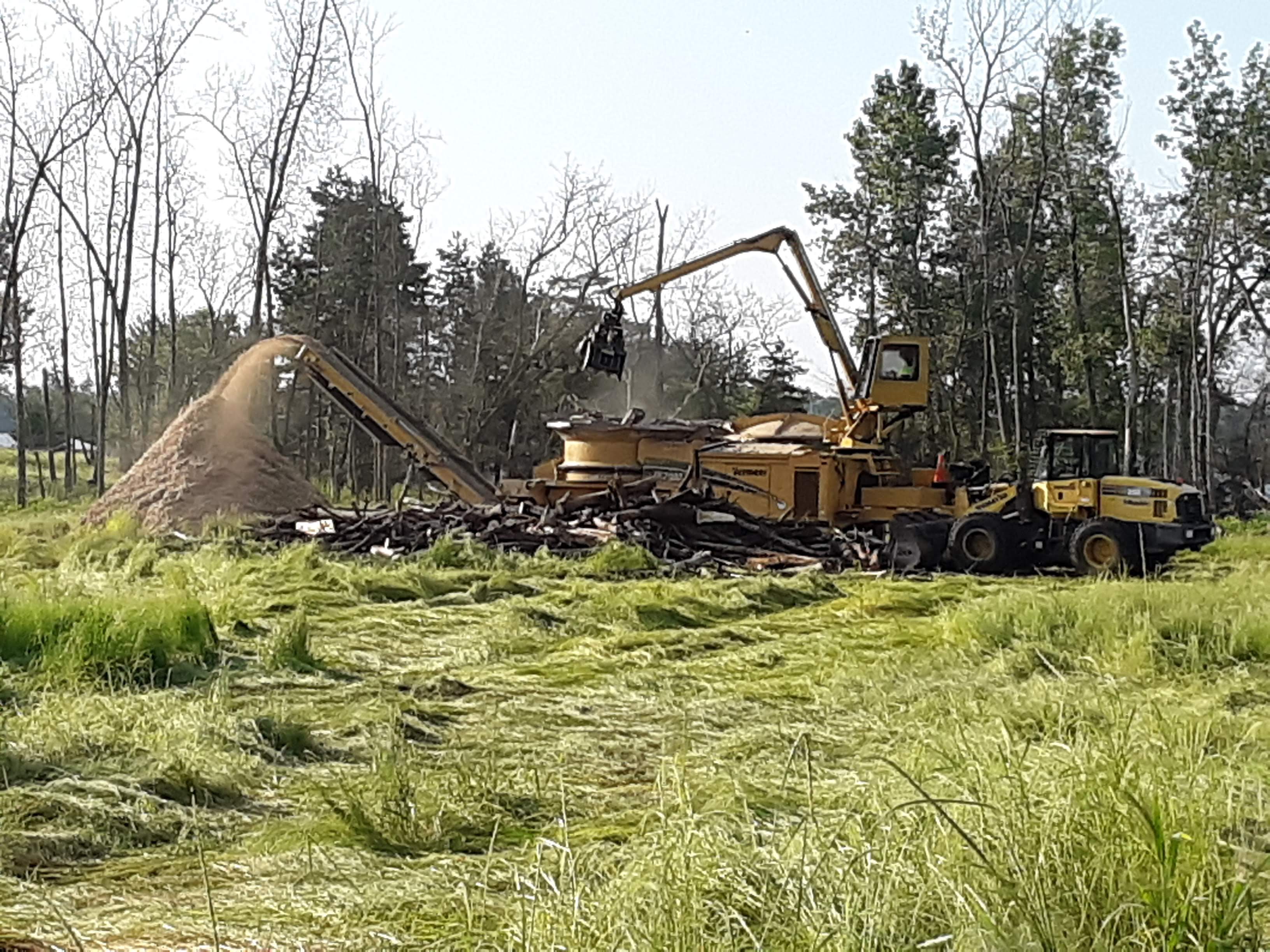
Project Update - May 2019:
Working with Blue Heron Ministries, we have planted a cover crop on the open field on the west end of the Clear Lake Nature Preserve. We were seeing some signs of erosion and wanted to reduce the movement of soil. The annual cover grass will grow over the next few weeks and provide cover until it is removed this fall.
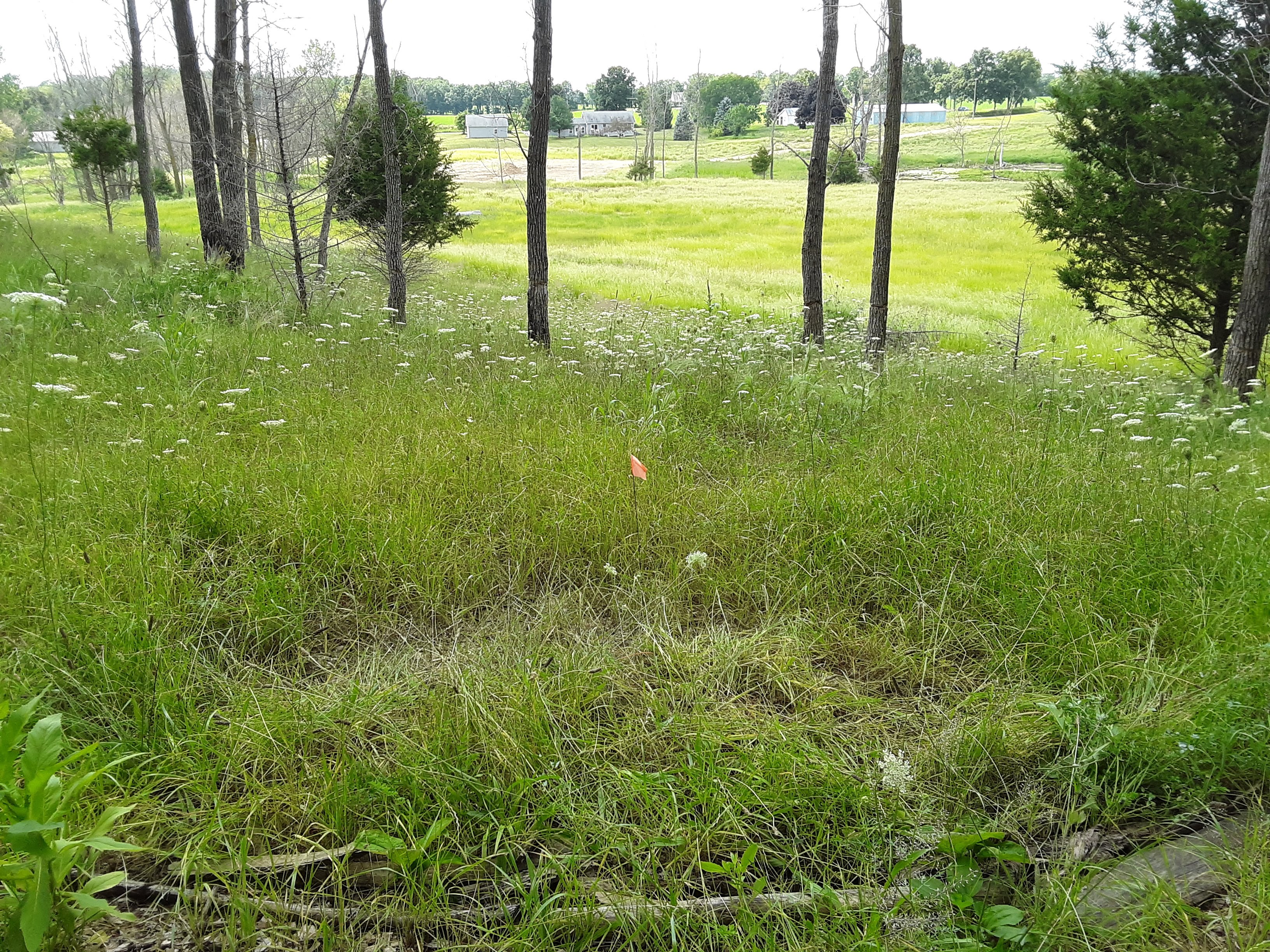
Project Update - December 2018:
Working with the restoration company, Blue Heron Ministries, it was determined that an additional year of invasive species control will be necessary at the Clear Lake Nature Preserve. The invasive species control efforts will need to continue to ensure the successful establishment and growth of the native prairie plants. Invasive species have a tendency to grow earlier in the spring and shade out native plants. Additional herbicide applications will occur around June and Aug. 2019. Seeding will occur in the winter of 2019/2020, depending on the weather. We should see plant growth in Spring 2020! Thank you for your continued support of this project.
Project Update - November 2018:
Many thanks to the 14 Trine students from Phi Kappa Theta and 11 community members who join for the workday. We spread woodchips and made great progress on the trail building effort!
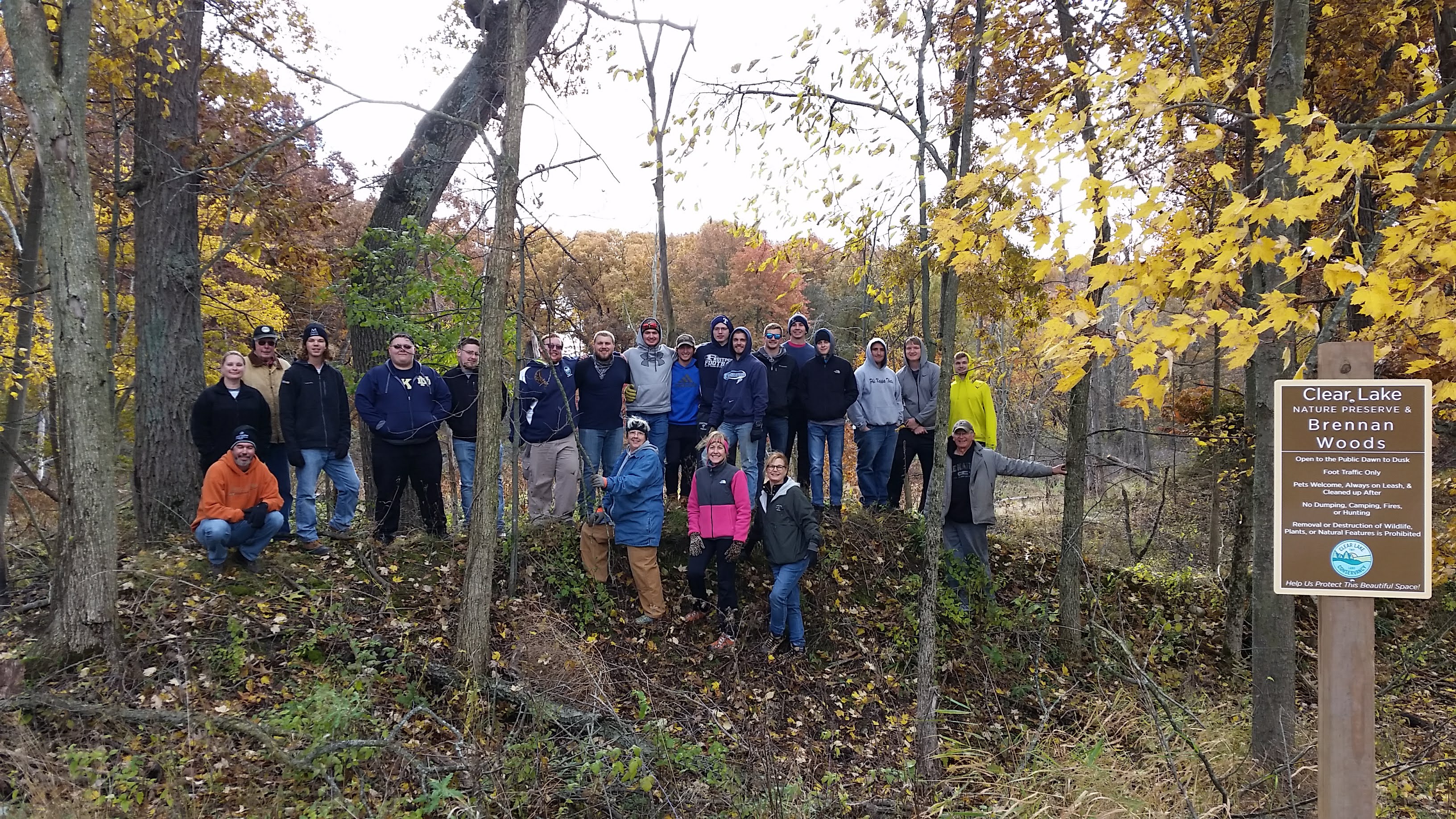
Project Update - April 2018:
Volunteers gathered to cut and pile tree debris on the west end of the Clear Lake Nature Preserve.
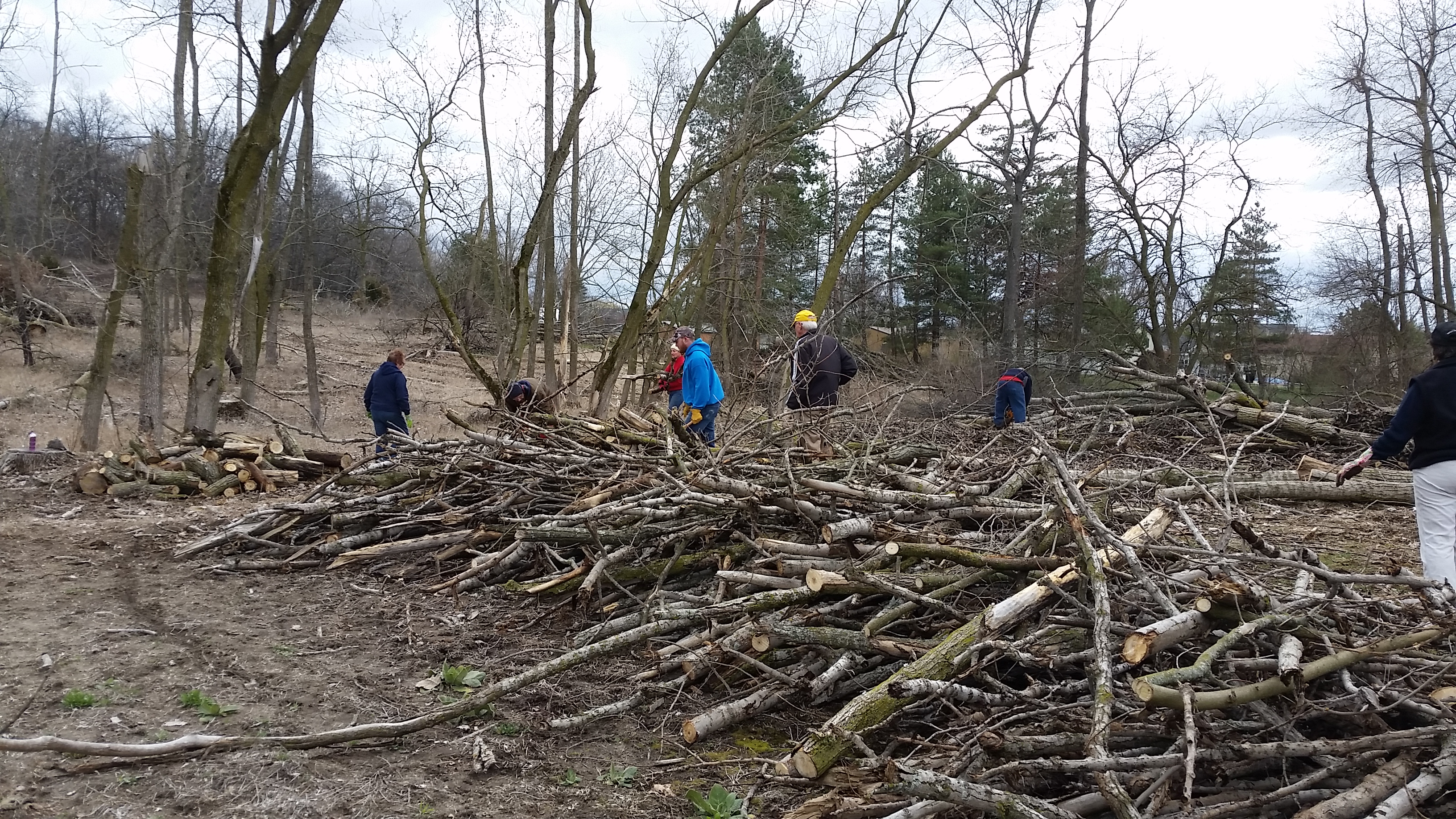
Much of the downed wood was from cottonwood trees. The cleanup was necessary to ensure good seed to soil contact when the native prairie seed mix is dispersed on the field this winter. Many thanks to the volunteers who supported the workday and the vision of the restoration project!
Several truckloads were taken by a local resident to burn for winter heat.

Project Update - July 2017:
The Clear Lake Nature Preserve including Brennan Woods is open! The preserve was closed to the public a few months in the spring of 2017 during a selective tree harvest. Even though the preserve is open, the land looks quite different after the tree harvest and after the prescribed fire we completed earlier in the year on the preserve. More recently, some residents and visitors are noticing the brown field on the west side of the preserve.
Not surprisingly, some are asking, why all this activity?
We're glad you are interested! Here are the reasons and the vision. Converting the 46-acre, Clear Lake Nature Preserve & Brennan Woods to its former open oak woodland continuum (meaning the preserve includes an oak savannah ecosystem that gradually becomes an open oak woodland ecosystem) requires all these steps--a selective harvest, a prescribed fire, and vegetation management.
Under the direction of a forestry consultant, over the last several months, large equipment has removed carefully selected trees. A variety of sizes, including large mature trees, and various species, including cottonwood, a variety of oaks, hickory, maple, black cherry, bigtooth aspen and others, were removed to open up the canopy and convert the forest back to an open oak woodland. Around 200 trees were removed with over half being cottonwood trees. While they are native to our area, they are not desirable in the oak woodland ecosystem. Timber harvesting is used as a management tool to change the light levels in the forest, to stimulate regeneration, and to change the very structure of the forest. It can be controversial, it can be hard to understand, and it can be ugly!
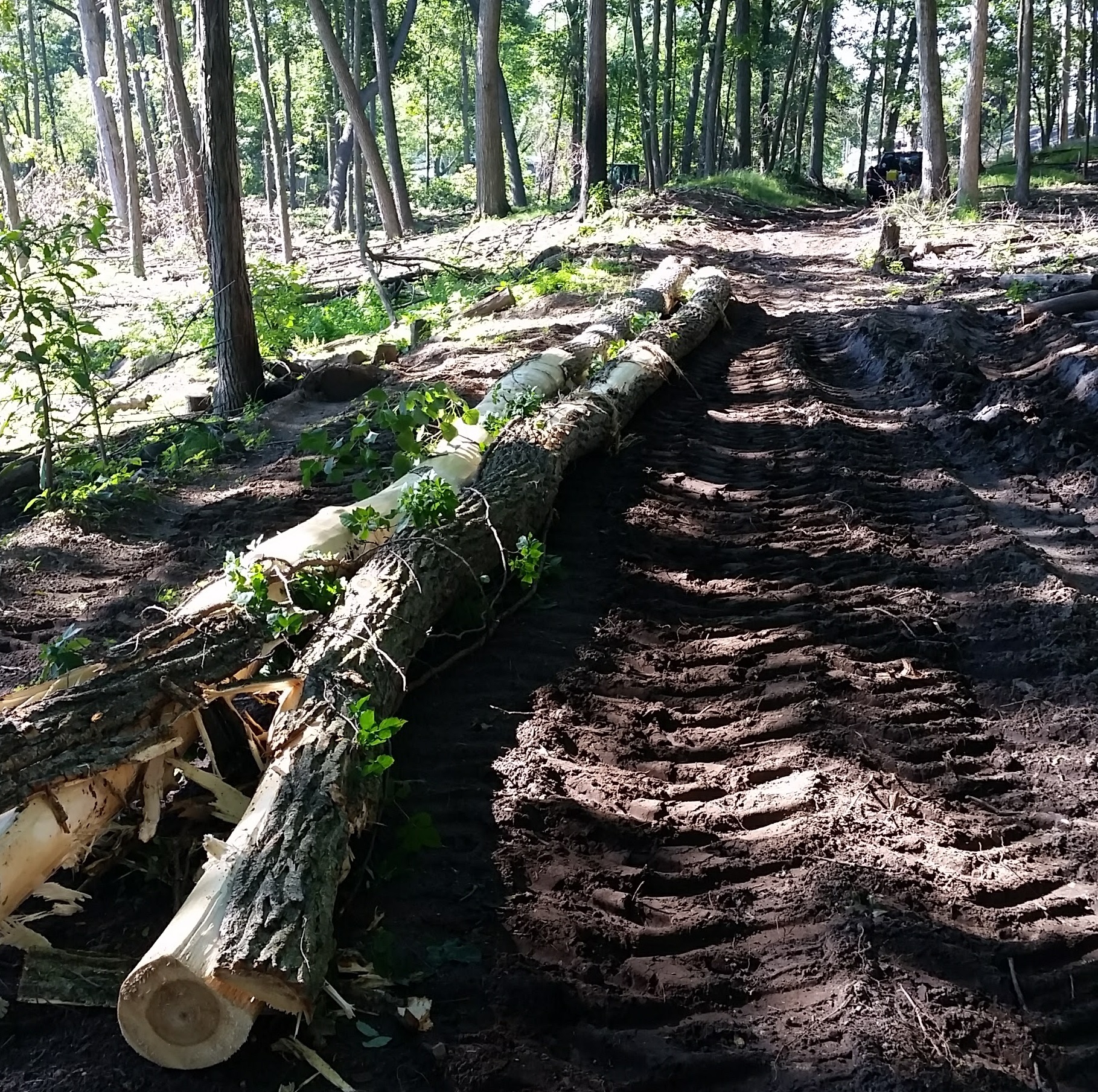
When timber is harvested, the process looks and is somewhat chaotic. Bits of the tree, like the tops, remain, temporary access trails are installed, erosion occurs, and occasionally residual trees are damaged or taken out in the process. Now that the harvest is completed, the tops and remaining debris will deteriorate and add important nutrients back into the soil and in the meantime serve as habitat for wildlife. The temporary trails will revegetate and the overall erosion was minimal. The timing of the harvest was intentionally done in late spring, early summer to allow time for vegetation to reestablish helping to minimize the potential for erosion.
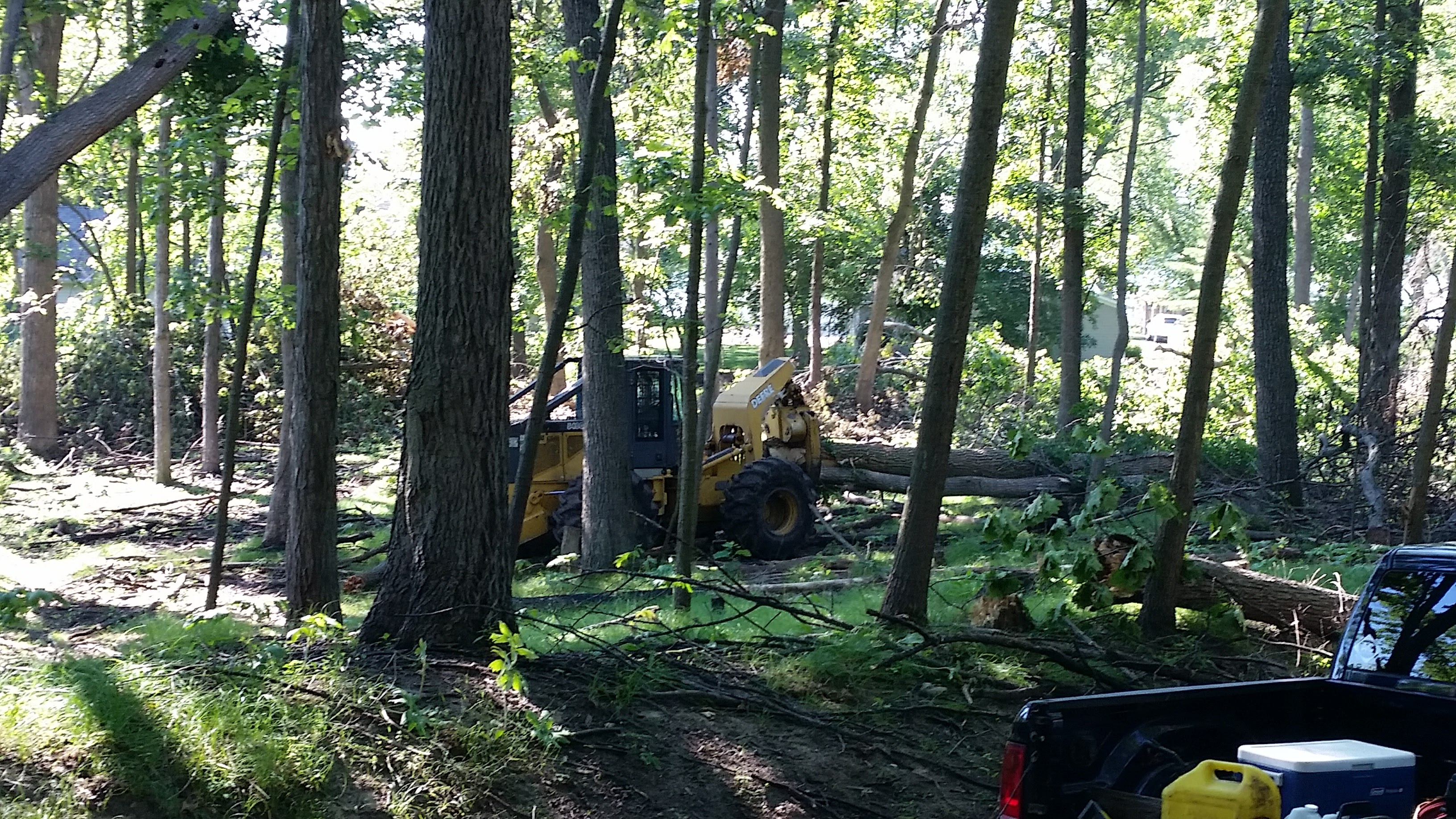
Removing these carefully selected trees will help us reach our restoration goal of opening up the canopy to allow more light to reach the forest floor. Before the harvest, the canopy was so thick that oak saplings, for example, could hardly receive enough sunlight to grow for natural oak tree regeneration. The prescribed fire earlier in the year helped to remove a thick leaf litter layer, creating more ideal growing conditions for native understory plants, including baby oak trees!
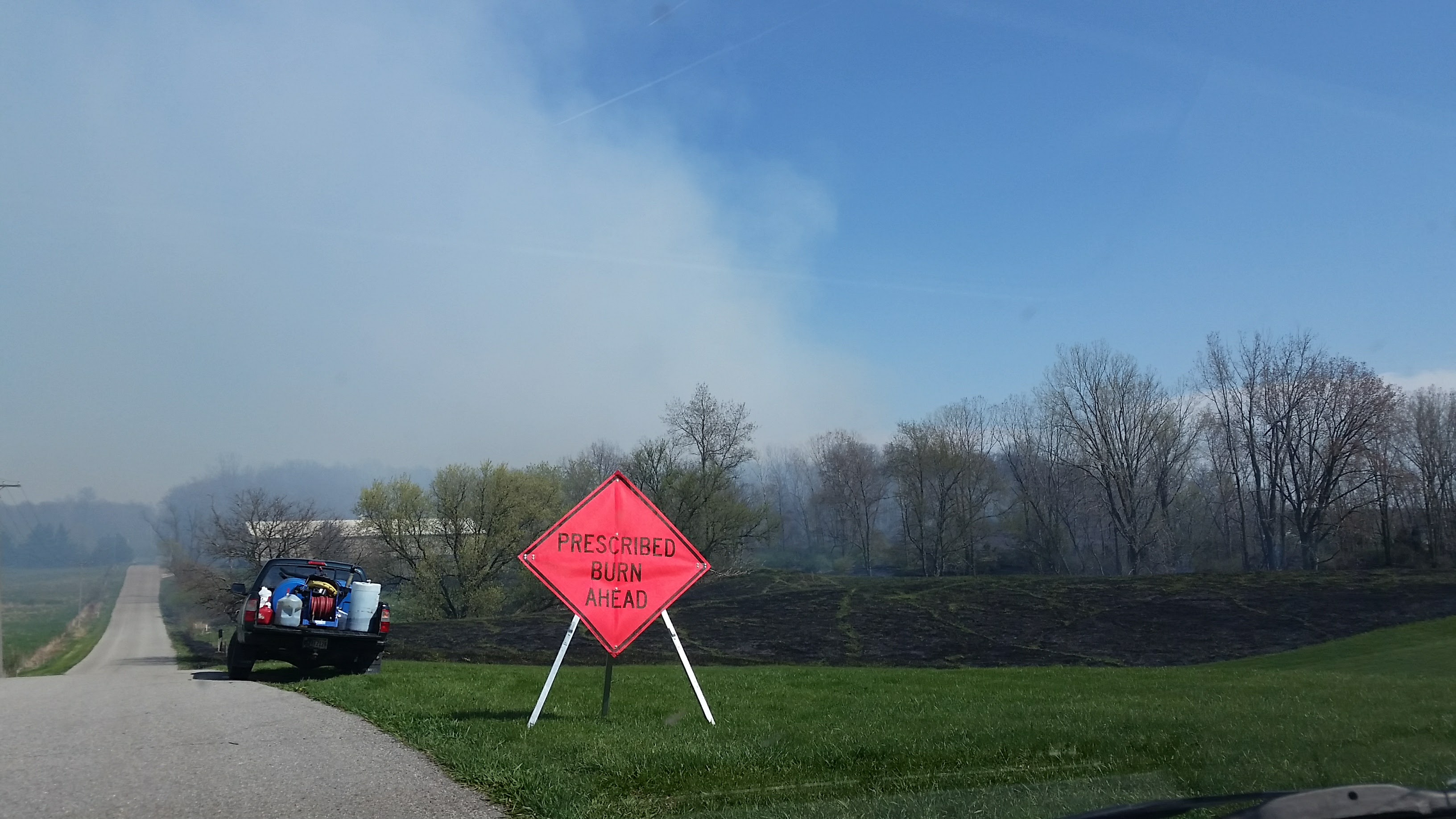
Next steps? Vegetation management will continue over the next few years. Activities will include herbiciding, seeding, cutting and pulling, mowing, and prescribed fire. The large patch of brown field on the west side of the preserve was sprayed, by a licensed professional, with herbicide. Native seed will be dispersed, replacing the non-native vegetation currently there. Over time, this portion of the preserve will be restored to a native oak savanna.

What's the longterm vision? In addition to the restoration activities, our summer intern, Jonathan Moss, with the guidance of our Lands Committee and input from the community, is designing a hiking trail through the preserve. We are determining the location of a small parking area, the location of the trailhead and how many trailheads we should offer, signage locations and wording, and other aspects of the trail installation. Our goal in creating the trail is to help protect important features of the preserve while encouraging exploration and enjoyment of this beautiful property.
